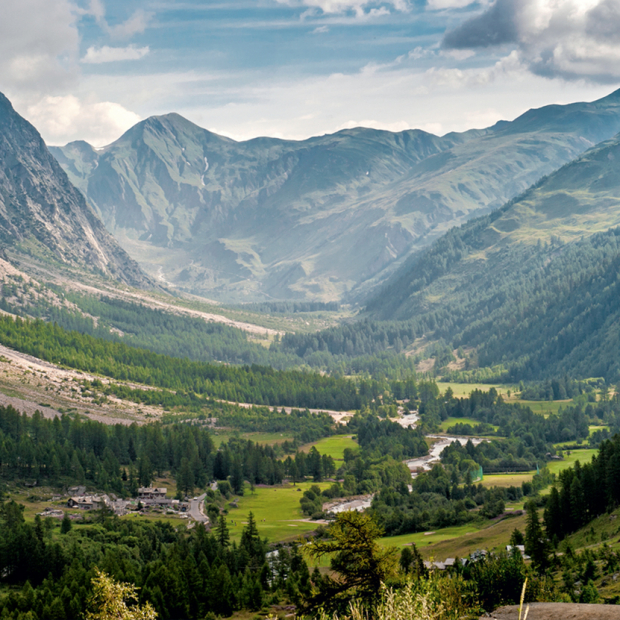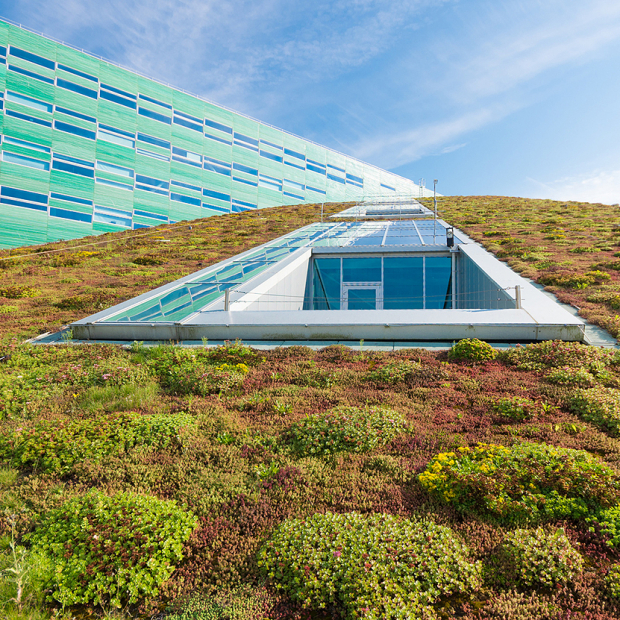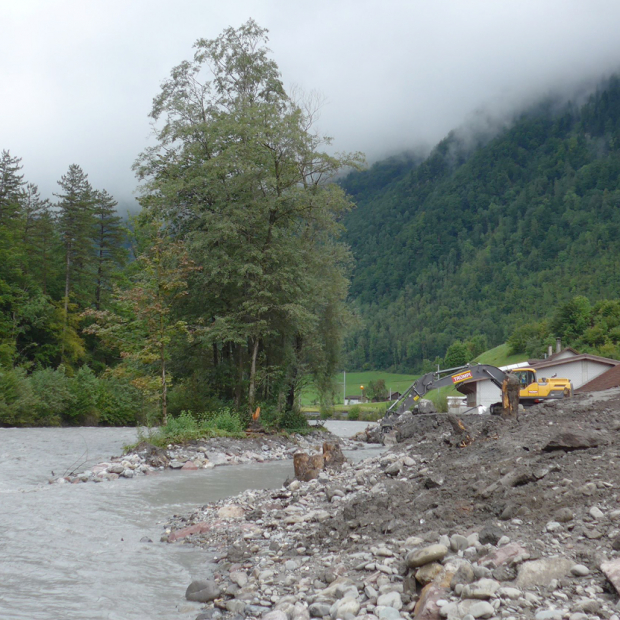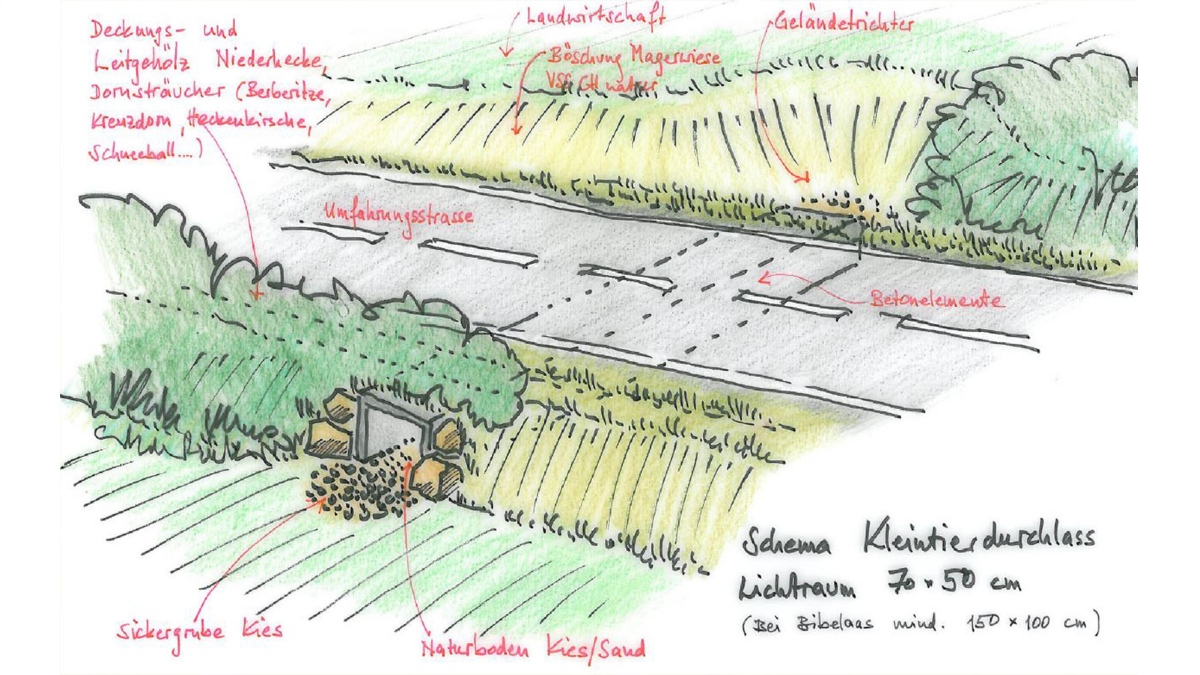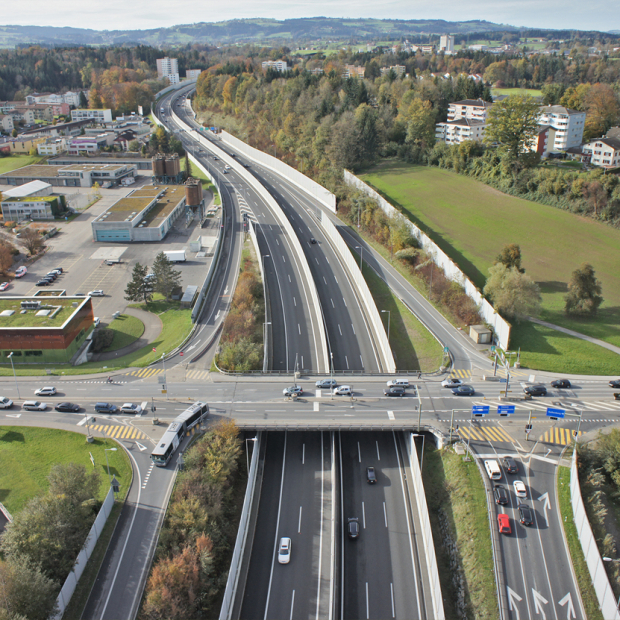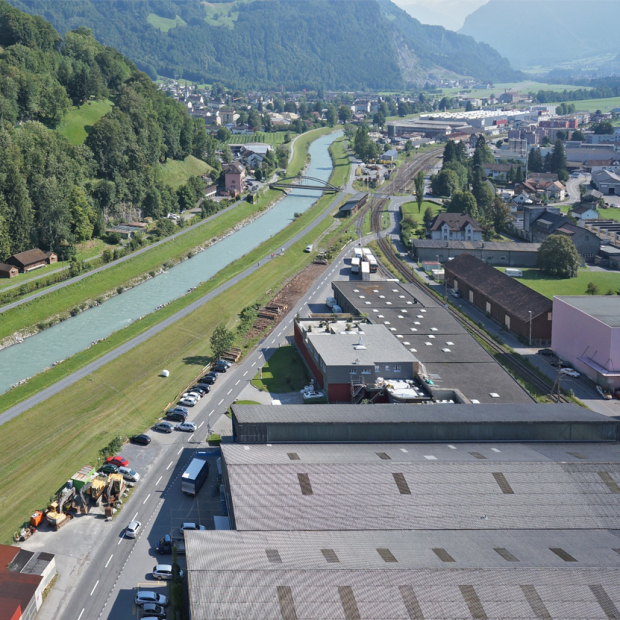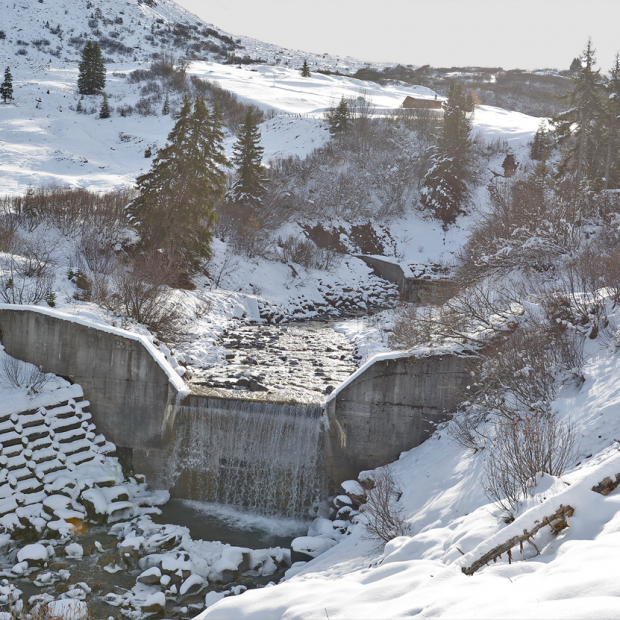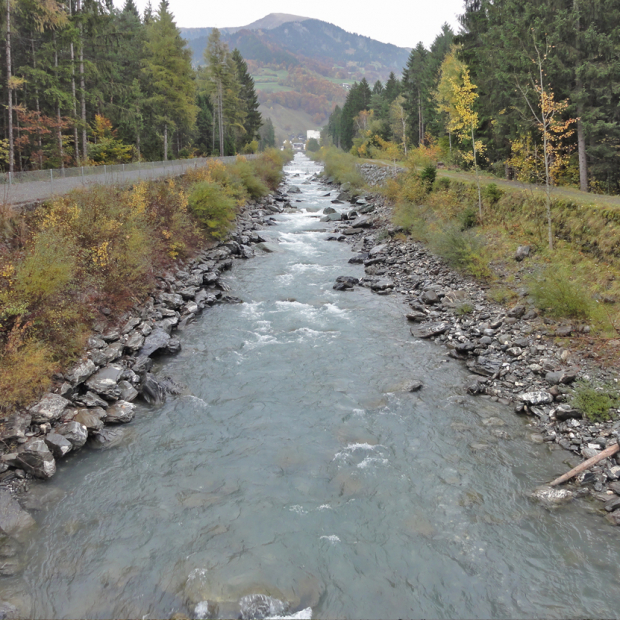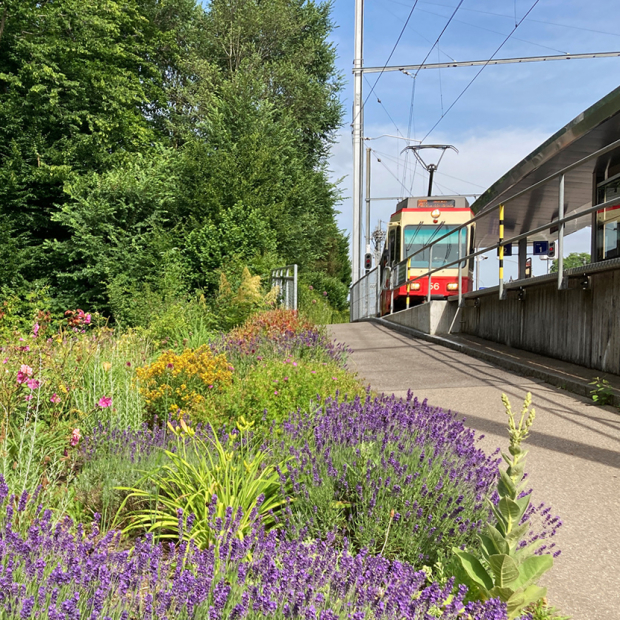
Flora, fauna, habitats
Intensifying land use and climate change have exposed natural habitats, as well as the flora and fauna they contain, to ever greater threats. That have culminated in an accelerated loss of biodiversity. With careful planning and appropriate protective and support measures, permanent impairments can be prevented or at least minimized. Indeed, this is one of our main objectives when we assess the impact of construction projects and implement appropriate measures. We also design studies and draft specialized plans aimed at preserving biodiversity.
We have many years of extensive and in-depth experience in flora, fauna and habitats - especially in the following areas:
Assessment of impacts on natural habitats
Based on available information (e.g. nature conservation inventories) and our own investigations, we survey the status of the habitats in an area and identify valuable natural objects. We assess the impact of projects on the surrounding habitats of flora and fauna as well as on ecological connectivity.
Planning of protective measures
We help optimize projects to protect valuable natural objects. At the same time we plan measures to protect plants and animals and their habitats and how they are connected to one another.
Planning of compensation and mitigation measures
Interventions in natural habitats cannot always be entirely avoided. Which is why we plan measures that create new natural value and thus compensate for project-specific interventions.
Creating Environmental impact reports
Environmental impact reports compare losses and gains and are therefore an effective tool for assessing a project's impact. We use existing evaluation methods or develop new, project-specific solutions.
Green infrastructure planning
After examining all available data pertaining to the original ecosystem condition at various spatial levels, we draft plans for securing biodiversity in core, peripheral and potential habitat areas.
In our work we maintain close cooperation with the relevant agencies and involve other nature conservation professionals when necessary. This makes it possible for us to develop solutions that ensure intact habitats over the long run.
Projects for Topic Flora, fauna, habitats

